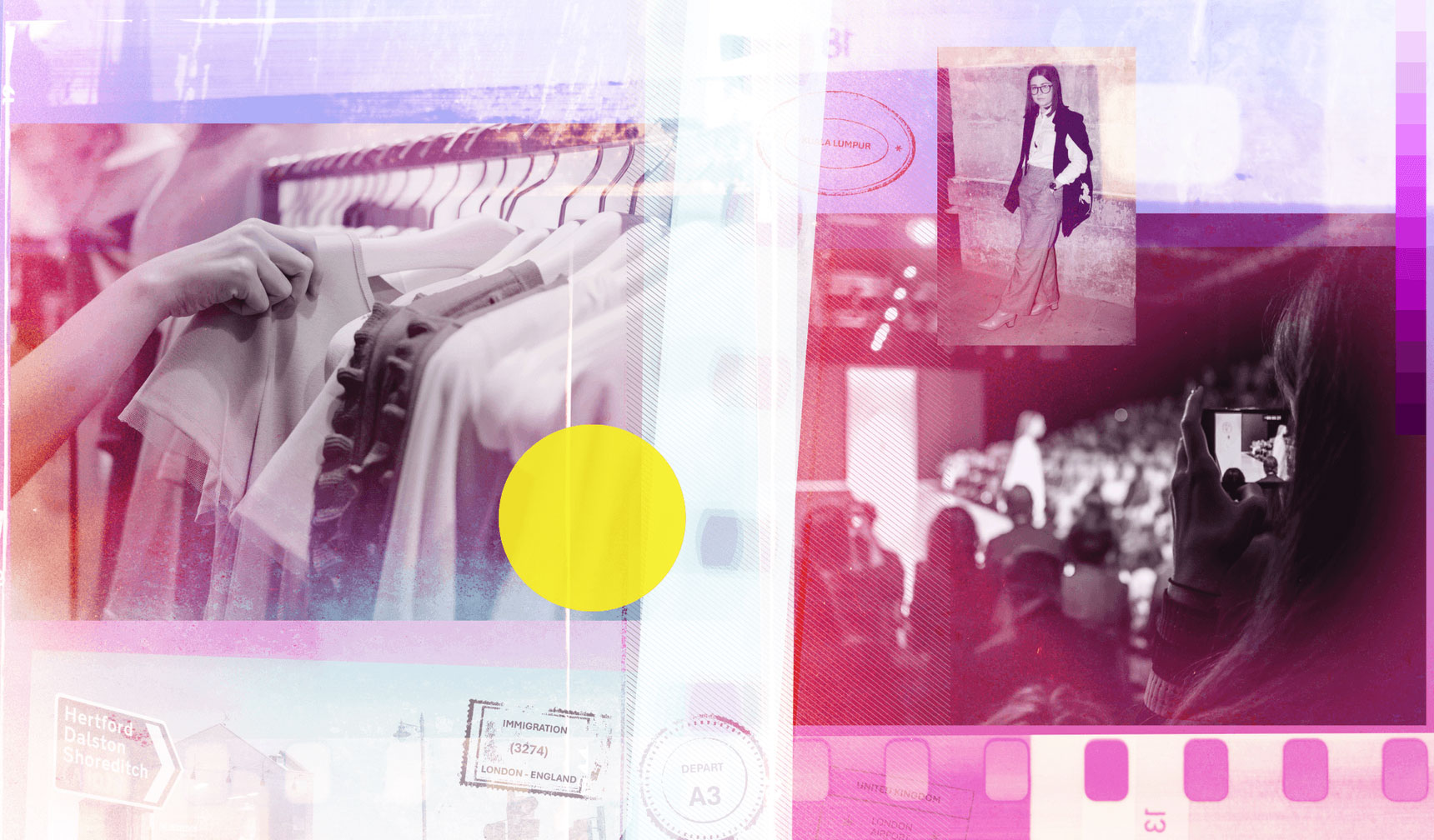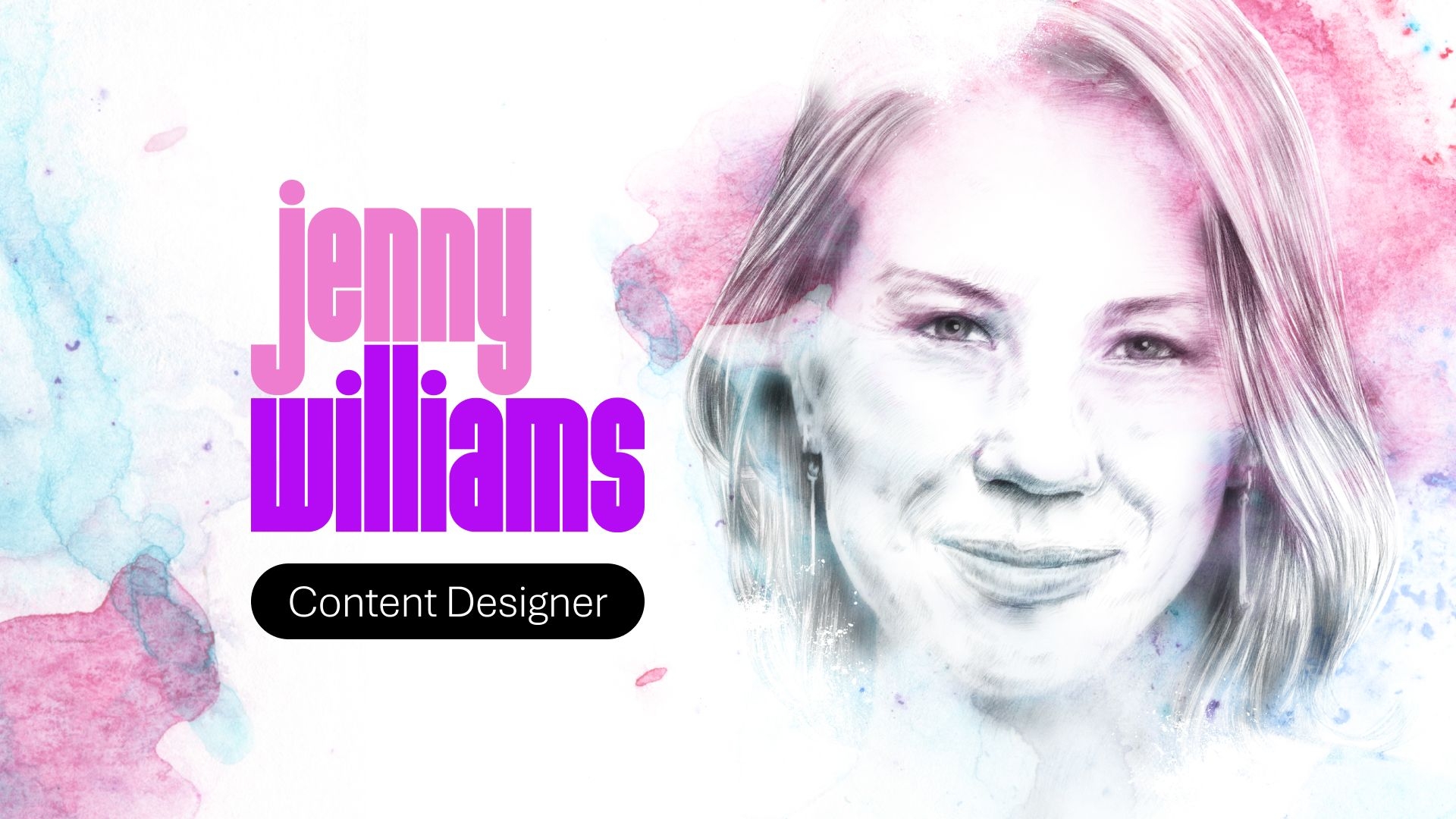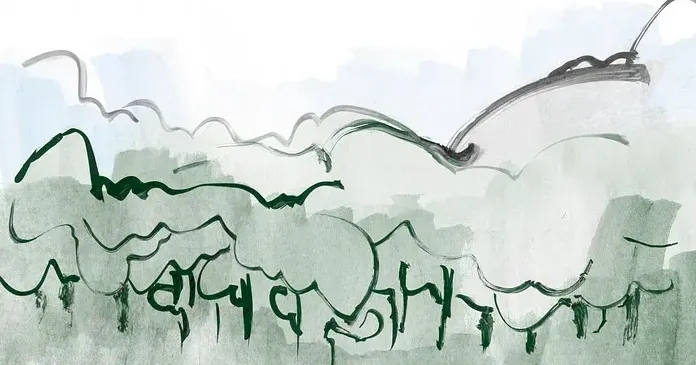Op-Ed – Content Design – Profiles
Why designers shouldn’t always be designers
A Content Designer from Microsoft Clipchamp tells her story

“In five years, you’ll probably be working a job that hasn’t been invented yet.” This quote would reverberate through the halls when I was studying journalism in Melbourne, Australia. At the time, I thought that it applied to more “cutting-edge” disciplines, such as economics and technology, where it seems that new inventions were popping up every week. As a writer, I assumed that my career path would follow a well-trodden path: unpaid internships, work at the national broadcaster, and get to see my name in print.
But something kept nagging at me. Were there jobs that hadn’t yet been invented that combined this new frontier of exploration with journalism and writing? Were there other, newer ways of telling stories? How and where could I find them?
In five years, you’ll probably be working a job that hasn’t been invented yet.
Cut to: painting a wall black in the middle of Tate Modern. Quickly add: slicing together clips to create social videos at Al Jazeera. Cross-fade out and replace with: me lugging suitcases through the streets of Dalston as a stylist assistant at Cosmopolitan UK. Now, drag and drop the most up-to-date footage: working as a content designer on Clipchamp, Microsoft’s video editing software, designed to empower people to tell their stories in a new and exciting way.
Because what is content design, anyway? Content designers employ a combination of grammar, syntax, strategy, research, data, and insights to formulate copy and messaging that highlights and strengthens the value proposition of a product.
We shape and guide people’s experiences throughout a journey – whether that journey takes place in a chapter of a book, or on a catwalk, or on the wall of a gallery. Closer to home, the journeys I design today include flows that help people get to know Microsoft Clipchamp, an easy-to-use video editing program, for the first time. Content design guides users through our video editor, introducing our useful editing tools. No matter the medium, design is about feeling: while the vehicle for emotion may be different, design is the method in which you engage someone with their inner dialogue.
Becoming a content designer doesn’t often follow a typical career trajectory, post-study. In fact, that’s one of the strengths of design: that it welcomes experiences outside of the field.
The wider design team at Clipchamp all hail from varying backgrounds. Liana, our Senior Product Designer, works across our magic tools, such as auto compose, text to speech and auto captions. She has traversed many different areas of thinking and employment, from NGOs and event management to interacting regularly with the public while working at a radio station.
Tamara, our highly skilled motion designer who designs the templates and content that our users love, is a fine arts graduate and jeweler. “Jewlery really taught me the importance of being a master of your craft. You need to put in the many, many hours that train your muscles and expand your experience to be able to execute elegant solutions to a wide array of problems, otherwise nobody cares what your ideas are.”
Being part of a team that values and emphasizes designing with holistic thinking helps us span varied cultural contexts. We can often cover for each other by identifying blind spots and gaps, and we pride ourselves on applying diverse problem-solving methods that bring new perspectives to a project.
But before Clipchamp, I hadn’t worked as a content designer. In fact, my experiences all had one thing in common: they were all jobs that hadn’t been invented when I was at university.
After I graduated, I completed an internship at Al-Jazeera, in Kuala Lumpur. At the time, video storytelling was emerging as one of the dominant methods of social narrativization, with social media feeds starting to embrace a new way of presenting information in easily consumable, bite-size chunks. “Huh,” I remember thinking. “What an interesting way to tell a story.”
Like most major news outlets across the world, Al-Jazeera needed people to cut down big stories into subtitled, mini-packages that could be shared across Facebook (this is still pre-Tik Tok, so bear with me!). It was my job to help to write — and then eventually create — bite-sized videos that cut down the full episodes produced by the award-winning team at 101 East. These videos had to summarize full episodes in less than one minute. It provided an incredible experience in curating narratives, but it also gave me valuable time literally constructing the video.


Being a content designer at Clipchamp leans on these past experiences heavily – and yet none of them can be called “content design.” Styling, performance art, and journalism have all shaped me into the content designer that I am: one who brings cultural considerations into Clipchamp’s messaging strategies and executions, and who considers how our messages and content will be received by users worldwide. Clipchamp harnesses my own passion for video and has shown me that the best way to empower people to tell their stories, their way, is to hand them a consistent and cohesive product, grounded in strategic and thoughtful messaging.
As we venture into the age of AI, we can be sure that jobs will continue to reinvent themselves, especially relating to instructing and guiding our machine-learning technologies. Right now, the perfect people to help teach and train AI are those whose frames of reference are more expansive, and who can contribute new perspectives to the new frontiers of prompt engineering. This collectivization also needs to include people beyond the typical frames of privilege and access. We need to bring in and empower people of different races, cultures, abilities, and gender expressions in these crucial moments of AI development to reflect lived experiences and ensure that our technological representation of the world includes a product that enables people to see themselves in it.
Looking at the road that led me here, I feel lucky to be living and working in a time where invention and innovation unfolds all around us. I also feel lucky that my various experiences across different fields are seen as strengths. Having a diversity of experience brings much-needed texture to design thinking, informed by knowledge of contexts that bolster our abilities to represent our customers.
I think if I could go back and reword that refrain I heard constantly when I was younger, I’d say: “don’t wait for the next 5 years – start inventing the job you want to work today.”
Read more
To stay in the know with Microsoft Design, follow us on Twitter and Instagram, or join our Windows or Office Insider program. And if you are interested in working with us at Microsoft, head over to aka.ms/DesignCareers.

A canvas of community narratives
Xbox celebrates a year of visual storytelling by launching new dynamic backgrounds

In the age of AI, will content designers become extinct?
Senior Content Designer Jenny Williams talks about her role, and working with AI

Leave no trace
How product designers can break from the status quo and help our planet
